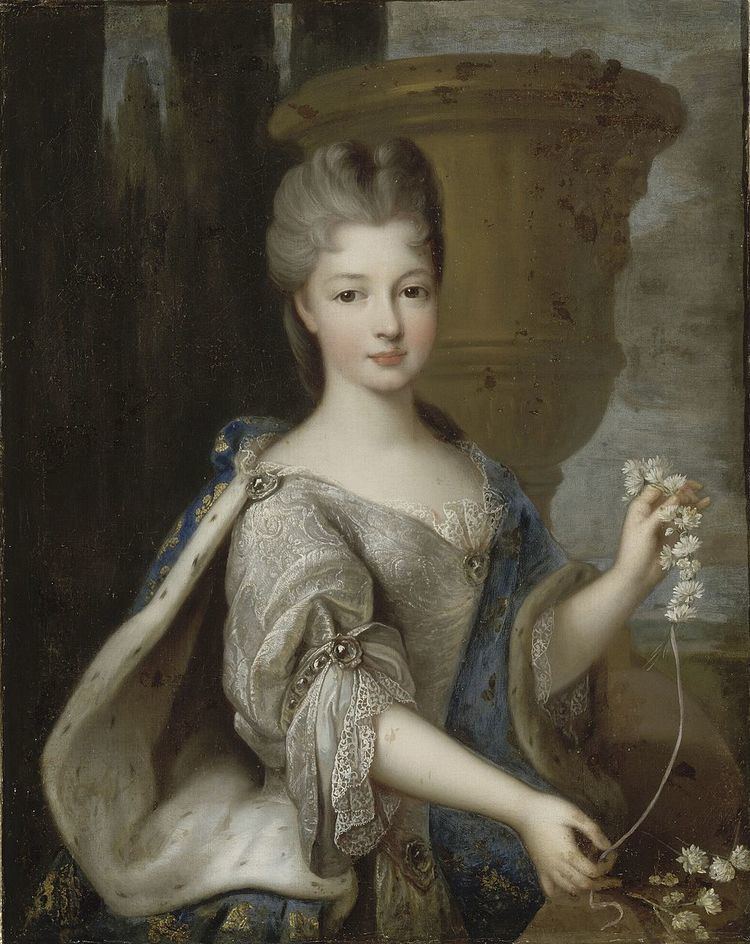 | ||
The Hôtel de Conti, sometimes the Palais Conti refers to two Parisian townhouses that were the property of the Princes of Conti, the relatives of the ruling Kings of France and Princes of the blood.
Contents
History
The first hôtel was situated on the Quai de Conti in Paris looking over the Seine and towards the Louvre. This building was the home of the Conti family until 1733. Most of the Conti family were born and died here:
Marie Thérèse commissioned the famous Robert de Cotte to carry out improvements. After her death, her daughter-in-law moved into another Paris palace; it was later given to her brother-in-law, Louis Auguste, Duke of Maine, who had it demolished. Louise Élisabeth de Bourbon, bought the next hôtel.
Hôtel de Brienne
The Hôtel de Brienne was constructed during the reign of Louis XV of France, in 1724; it was built by François Debias-Aubry for François Duret, the President of the Grand Conseil. Duret was a friend of the Marquise de Prie, mistress of Louis Henri, Duke of Bourbon (Prime minister of France and another Prince of the Blood). Duret had been ordered to construct it by Madame de Prie who was looking for a suitable residence in Paris. In 1726, the Duke of Bourbon lost favour at Versailles and was exiled to his residence at Chantilly. Following this change of events, the hotel was sold to the widowed Françoise de Mailly, wife of the dead marquis de La Vrillière. Madame de La Vrillière lived at Brienne till 1733 when it was sold to the sister of the disgraced Duke of Bourbon.
Louise Élisabeth de Bourbon, Dowager Princess of Conti bought the hôtel and had the interior designed by the then fashionable interior designer Nicolas Simonnet. The new hôtel was near the Palais Bourbon, built by Louise Élisabeth's mother known as Madame la Duchesse Douairière.
The hotel would be named after the Conti family till 1776, following death of the Dowager Princess in the previous year, when it was sold to the Comte de Briene. It was from him that the present building takes its name. Monsieur de Brienne had bought the property from Louise Élisabeth's grandson Louis François I de Bourbon in late 1775, moving in the next year.
Monsieur de Brienne was executed during The Terror and the building was seized by revolutionaries making the building one of the central places of administration. Under that period it was known as the Commission du commerce et de l'approvisionnement. In 1795, the property was returned to the widowed Comtesse de Brienne. It was then sold to the wife of François Séguy, a businessman related to the military. The building then underwent many changes under the direction of the architect Lavoyepierre.
Victims of financial difficulties, the Séguy couple quickly separated from their new acquisition. In 1800, the hôtel awarded by a court to Joseph Lanfrey, who rent it to Lucien Bonaparte, then Minister of the Interior, and Napoléon's brother.
In 1802, Lucien Bonaparte, acquired the property and again had it redesigned. Three years later in 1805 he sold it to his mother Maria Letizia Ramolino. That is why during the reign of Napoléon, the edifice became known as the le Palais de Madame, Mère de l'Empereur (the Palace of Madame, Emperor's Mother).
Bought from Madame Mère by the state in 1817, the hôtel de Brienne became the home of the Ministry of War. In 1917, during the First World War, Clémenceau then head of the French government, worked on the final victory within its walls. Charles de Gaulle, also worked in the hôtel. First as the secretary of State in June 1940, then as the chief of the provisional government in August 1944 till January 1946.
The building is still the home of the French Minister of Defence.
